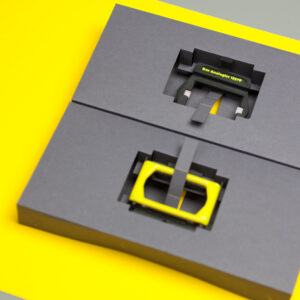Explore the Comeback of Analog Photography
Auch im digitalen Zeitalter beeindruckt der Fuji SP-3000 Profis. Entdecken Sie seine einzigartigen Funktionen!
In der sich schnell entwickelnden Welt der Fotografie könnte man annehmen, dass veraltete Geräte in Vergessenheit geraten.
Überraschenderweise ist der Fuji SP-3000 jedoch auch im Jahr 2025 noch die erste Wahl für professionelle Fotografen. Warum ist das so? Wenn man sich die Qualitäten des SP-3000 näher ansieht, wird ganz klar, dass dieser Scanner trotz seiner Produktion vor 17 Jahren seine Relevanz behalten hat.
Einer der wichtigsten Aspekte, der den Fuji SP-3000 von anderen Scannern unterscheidet…
ist seine außergewöhnliche Fähigkeit, Farben und Tondetails einzufangen. Profis schwärmen von seiner Leistung bei Farbnegativfilmen, da er die Details erfolgreich hervorhebt, ohne Kompromisse bei der Tiefe einzugehen. Dies ist ein Bereich, in dem sein Konkurrent, der Noritsu HS-1800, etwas schwächelt, insbesondere bei unterbelichteten Filmen.
Die wärmeren Töne, die der SP-3000 erzeugt…
erwecken ein Gefühl der Nostalgie und fangen die Essenz der analogen Fotografie in einer digitalen Welt ein. Das analoge Erscheinungsbild der mit dem SP-3000 gescannten Bilder ist ein weiterer entscheidender Faktor, der zu seiner anhaltenden Beliebtheit beiträgt. Viele Fotografen suchen nach Möglichkeiten, diese unverwechselbare analoge Qualität beizubehalten, die mit digitalen Ansätzen manchmal schwer zu erreichen scheint.
Die Fähigkeit des SP-3000, starken Kontrast und lebendige Farben zu liefern…
und gleichzeitig einen authentischen analogen Charakter beizubehalten, macht ihn zu einer attraktiven Option für diejenigen, die sich dem Handwerk der Filmfotografie verschrieben haben. Besonders hervorzuheben ist die Flexibilität des SP-3000 in Kombination mit einer Vielzahl von Zubehörteilen. Seine Kompatibilität mit Filmträgern wie dem Autocarrier NC100AY für 35 mm und einem Multicarrier MFC10AY für Mittelformatfilme ermöglicht es Benutzern, hervorragende Ergebnisse mit verschiedenen Filmtypen zu erzielen. Diese Vielseitigkeit ermöglicht es Fotografen, ihre Ausrüstung an verschiedene Projekte anzupassen und dabei durchweg qualitativ hochwertige Ergebnisse zu erzielen.
Letztendlich ist der Fuji SP-3000 nicht nur ein Relikt der Vergangenheit;
er beweist weiterhin, dass ältere Technologie in einer Landschaft voller rasanter Fortschritte immer noch ihre Stellung halten kann. Da Fotografen weiterhin den Wert satter Farben und nuancierter Bilder schätzen, die ein hochwertiger Filmscanner liefern kann, ist es wahrscheinlich, dass Geräte wie der SP-3000 auch weiterhin einen Platz in der modernen Fotografie finden werden. Sein Erbe wird nicht nur durch seine einzigartige Leistung bewahrt, sondern auch durch die anhaltende Anerkennung dessen, was die analoge Fotografie zum künstlerischen Prozess beitragen kann.

